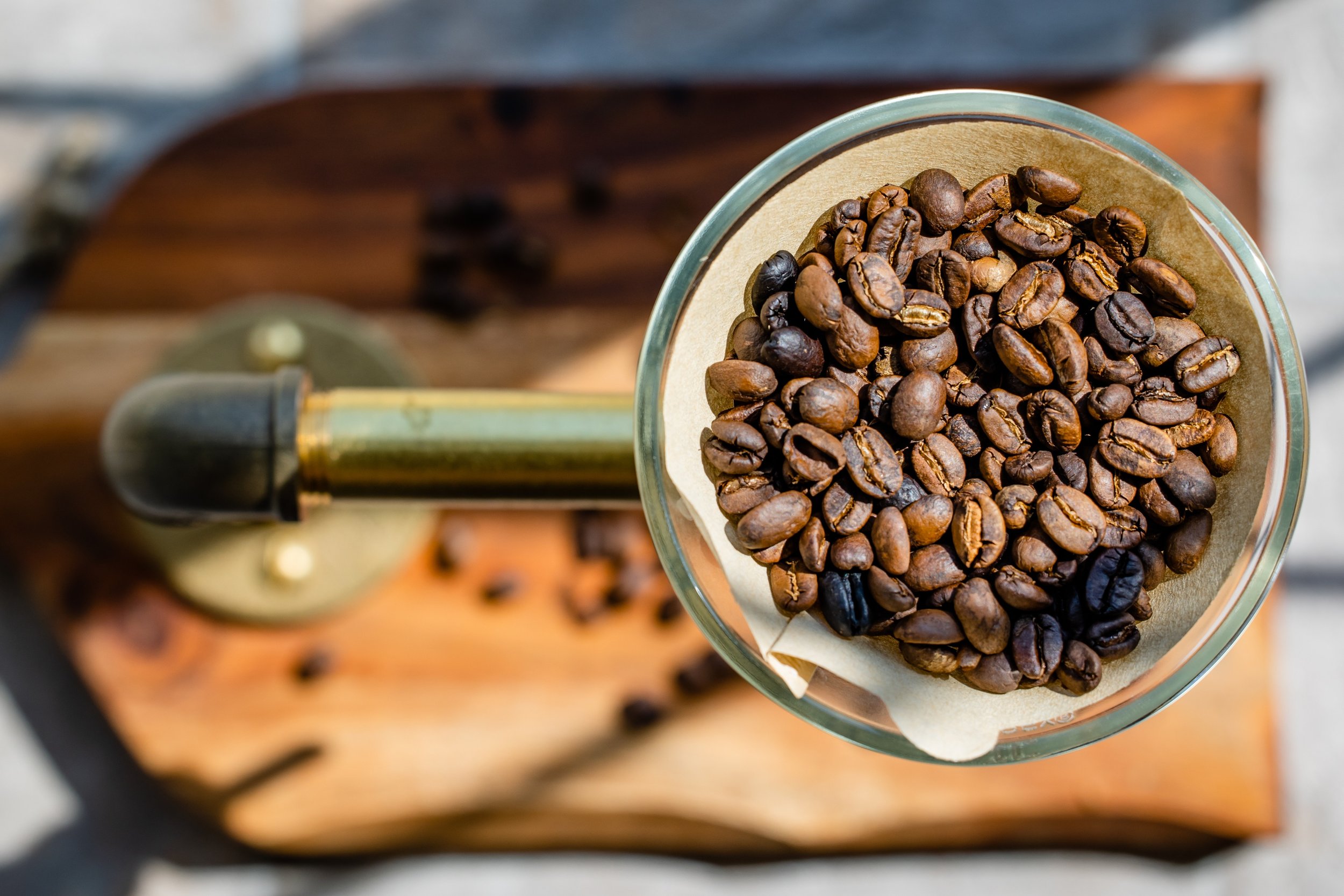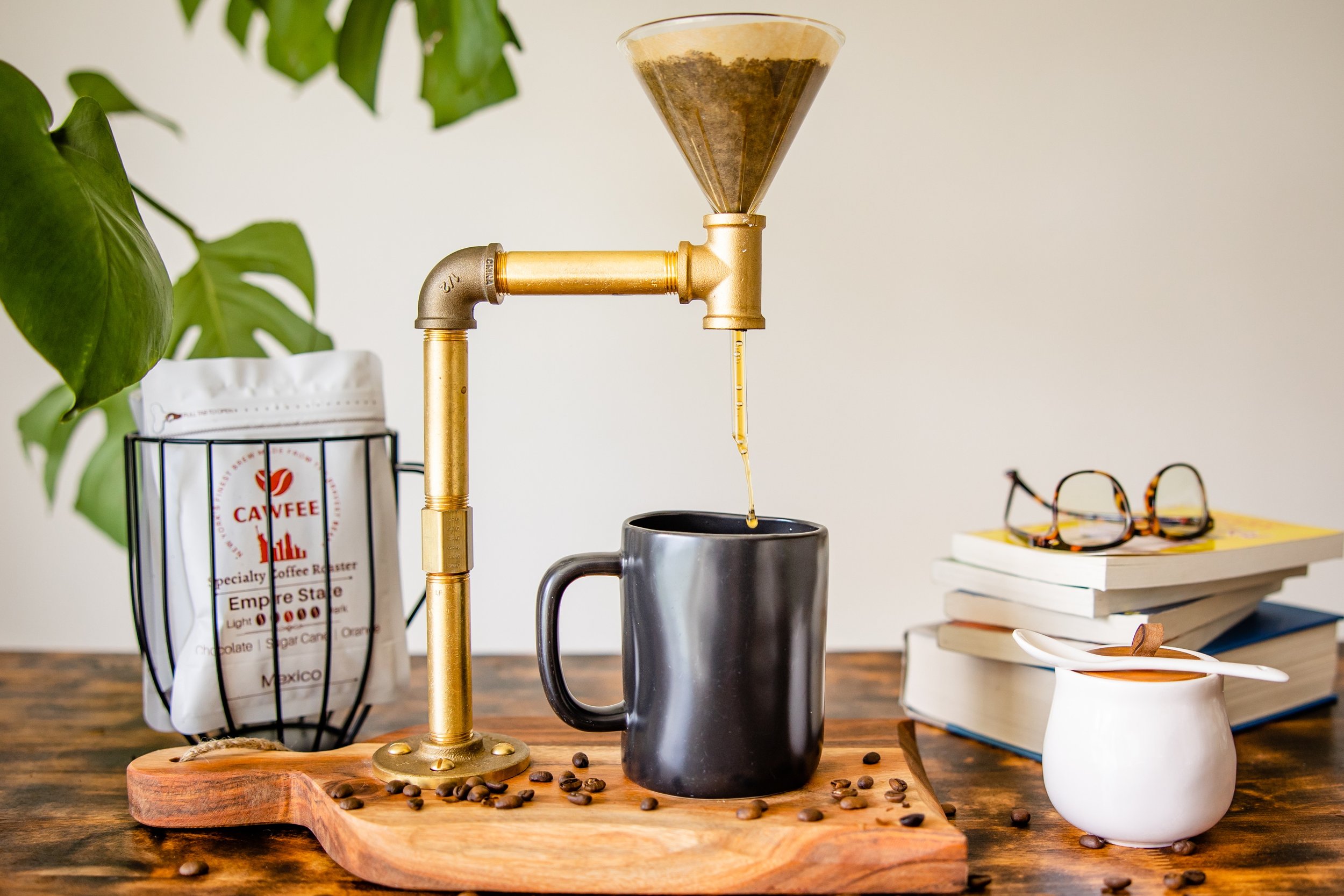
The Art of Coffee Making

Why?
Coffee beans are seeds matured in coffee cherry. They are then processed and dried to coffee beans. Before roasting, coffee beans are green in color and have a beany and grassy aroma. Actually, green coffee beans do not smell like coffee at all. When we roast coffee, we develop 800 to 1000 different aroma compounds. These compounds make the flavor of the coffee. With roast profiling, we can affect the existence of these aroma compounds in coffee and also determine the flavor of the coffee.
Adding more beans that hold flavor and caffeine and oils should give you coffee with more of all of those things. But that’s not how brewing coffee works. It all has to do with the way that coffee and water interact with one another and how the flavors are extracted from the beans.
We get flavor from coffee beans because the hot water dissolves soluble compounds in the ground beans (the same is true for just about anything you soak in hot water). When it comes to coffee, there’s only so much flavor and caffeine that can be extracted from each bean. Over-extracting coffee (meaning you take too much of the soluble flavors from the beans) will make coffee taste bitter, dry, and flavorless. And under-extracting (meaning you haven’t dissolved enough of these compounds) will leave you with coffee that tastes sour and a bit salty.
You want to be right in the middle. And for the tastiest, most flavorful extraction, we use a golden coffee to water ratio of 1:16 parts coffee to water when we brew. (We prefer to measure this ratio in weight, like 22 grams of coffee to 352 grams of water, but if you don’t have a scale, you can measure by volume.) When you add more beans, you’re just wasting coffee, since there’s only so much caffeine that you can draw out before you start to pull over-extracted flavors, too. Some of this has to do with grind size, brew time, and water temperature, but the most significant factor is the coffee to water ratio.
Coffee roasting process
Roasting means transforming coffee beans from green to brown. There are different ways to make it, and that affects the flavor.
First, coffee is processed to remove the outer skin, pulp, and inner parchment skin. Once that is complete, the inner seed, otherwise known as the coffee bean, is dried.
When it’s dried it becomes the green coffee bean that is shipped around the world for roasting.
The coffee bean is like a dry pinto bean, meaning it can be stored for long periods of time and still become fresh once it goes through the roasting process. If you didn’t roast coffee, the drink would be bitter and very acidic, making it essentially undrinkable. Roasting gives coffee its unique flavors and aromas.
Roasting stages
There are three main stages in roasting: drying stage, browning stage and development stage or roasting stage.
1. DRYING STAGE
The coffee bean has a humidity of 8–12%. We need to dry it before the actual roasting starts. Drying stage typically lasts 4–8 minutes with traditional drum roaster (see below for roaster designs). The temperature in the end of drying stage is typically 160 ⁰C. Especially with drum roasters, you need to be careful so that you do not burn the beans by having too much heat in the start. The drying stage is also important for collecting energy for the bean because the last stage of roasting is exothermic (heat producing).
2. BROWNING STAGE
From 160 ⁰C the coffee starts to smell like toasted bread and hay. This is when the aroma precursors are starting to convert to aroma compounds. Even though browning stage is after drying stage, drying continues during the browning stage.
At the browning stage starts the Maillard reaction that is responsible for browning. In Maillard reaction, reducing sugars and amino acids react making hundreds of different aroma and color compounds known as melanoids. This is the stage when the roast naturally slows down – and some roastmasters also want to slow it down – to ensure flavour development. In the end of browning stage the coffee starts to pop. This is called the first crack and the development stage starts.
3. DEVELOPMENT OR ROASTING STAGE
In the beginning of development stage the reaction becomes exothermic and the coffee cracks. During drying and browning stages the bean has collected energy that makes the coffee to explode. Development time is when the wanted aroma compounds are developing. If we do not slow down the roast at development stage, we easily get coffee that is smoky tasting and the flavor is too sharp
4. COOLING THE BEANS AND REMOVING CHAFF
During the roasting process, the coffee beans will shed their outer skins, leaving behind the shell which is known as the chaff.
To remove the chaff, take 2 colanders and dump the hot beans into the colander as soon as you are done roasting. Continue to dump the beans back and forth between the two colanders a few times to remove the chaff. If you don’t get it all don’t worry about it.
The taste of your coffee won’t be affected by the chaff as long as there is only a small quantity of it left behind.
Dark Roast: The Boldest of the Bunch
True to its name, the beans of a dark roast have a dark chocolate hue and generally an oily surface. These beans are roasted longer and at higher temperatures than those of other roasts, up to 430-450 degrees Fahrenheit and until the second cracking sounds of the beans are heard. As a result of this increased heat for a longer duration, they lose moisture, density and acidity and develop a bitter and bold taste.
Dark roasts actually have less caffeine than their counterparts. While a cup of dark roast coffee will have the boldest flavor, it will lack the same potency.
Medium Roast: The Happy Balance
A medium roast finds itself in between dark and light roasts in nearly all aspects. The beans have a semi-dark color and lack any oil on their surface. The taste of a medium roast is considered balanced — not too strong and just slightly sweet..
The beans are roasted until 400-430 degrees Fahrenheit and their first cracking sound, which is a temperature and duration between that of dark and light roasts. The caffeine content, acidity and aroma are also in between the two.
A medium roast is essentially the Goldilocks of coffee and is well-suited for java drinkers seeking a balance of gentleness, boldness and caffeine kick.
Light Roast: Peaceful Yet Potent
Light roast beans are roasted at the lowest temperatures and for the shortest length of time, at 380-400 degrees Fahrenheit and just before the first crack of the bean. This results in a light brown color and no oil on their surface.
Compared to those of medium and dark roasts, lightly roasted beans retain much of their original flavor, density, moisture, acidity and caffeine as a result of their relatively minimal roasting. The flavor is gentler but is often considered more nuanced — herbal or fruity overtones can be detected stemming from the bean’s origins. Light roasts also have the most complexity and versatility with respect to aromas.

1. Green: The beans will retain their virgin green essence, even as they start to heat.
2. Yellow: The color will become yellowish, and the beans will emit a grassy odor.
3. Steam: Steam will rise from the beans. This is the water inside the beans evaporating.
4. First Crack: Here’s where the real roasting begins. Sugars inside the beans caramelize, and a cracking sound is heard, like the sound of popcorn popping.
5. City Roast: Following the first crack, the beans have reached City Roast, the minimum level of roast acceptable for most people’s grinding and brewing tastes.
6. City Plus Roast: With further caramelization of sugars and the migration of oils, the beans swell in size and reach City Plus Roast. This is a popular and common level of roast to use.
7. Full City Roast: Beyond the limits of City Plus is the Full City, an even darker roast that takes the beans to the verge of a second cracking.
8. Second Crack: (Full City Plus Roast): The beans undergo a second, more violent cracking and enter Full City Plus. This roast will reveal even more layers of intensity to the flavor.
9. Dark Roast: (French Roast): The smoke will become pungent, the sugars will burn as much as they can without ruining the flavor, and the beans’ overall structure will break down. This is the utmost limit of roasting within the confines of good flavor.
10. Burn: If you haven’t stopped roasting by this point, the smell will go from pungent too terrible, and the beans will burn.



